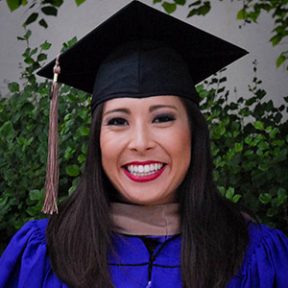 Thrilled that we are hosting our second TEDx event at the Rio Theatre in Santa Cruz! Join us on Aug 12, 2018 at 2 pm! Get your tickets for TEDxMeritAcademy at tedxmeritacademy.com/tickets. Meet Eshika Nellore!
Thrilled that we are hosting our second TEDx event at the Rio Theatre in Santa Cruz! Join us on Aug 12, 2018 at 2 pm! Get your tickets for TEDxMeritAcademy at tedxmeritacademy.com/tickets. Meet Eshika Nellore!
“How Identifying Bad Breath Can Save Your Life” by Eshika Nellore
Worried that plagues and diseases will cause hundreds of thousands of people to die, Eshika will present a refreshing solution to stop the spread of these illnesses. She brings to light, logical explanations behind shots and how they help protect the body from these epidemics. Come see how she implements music, art and reasoning in her talk!
About Eshika Nellore:
Eshika is a high school senior who is interested in studying medicine and public health. She founded Get Your Shots!, wrote a song and created a whiteboard video to prevent the return of eradicated diseases because there is a rise of people who are not getting immunized. As a volunteer in the Philippines, Eshika saw firsthand the recurrence of many diseases due to lack of vaccinations. While there, she educated indigenous people (Aeta communities) about a eating a high protein diet and washing your hands after using the restroom or before eating. In high school, Eshika was a speech and debate captain for expository speech and assisted a cardiologist. She is also a singer who has been vocally trained in musical theatre and opera for five years and has received awards in singing competitions.
 Thrilled that we are hosting our second TEDx event at the Rio Theatre in Santa Cruz! Join us on Aug 12, 2018 at 2 pm! Get your tickets for TEDxMeritAcademy at tedxmeritacademy.com/tickets. Meet Eshika Nellore!
Thrilled that we are hosting our second TEDx event at the Rio Theatre in Santa Cruz! Join us on Aug 12, 2018 at 2 pm! Get your tickets for TEDxMeritAcademy at tedxmeritacademy.com/tickets. Meet Eshika Nellore!
“How Identifying Bad Breath Can Save Your Life” by Eshika Nellore
Worried that plagues and diseases will cause hundreds of thousands of people to die, Eshika will present a refreshing solution to stop the spread of these illnesses. She brings to light, logical explanations behind shots and how they help protect the body from these epidemics. Come see how she implements music, art and reasoning in her talk!
About Eshika Nellore:
Eshika is a high school senior who is interested in studying medicine and public health. She founded Get Your Shots!, wrote a song and created a whiteboard video to prevent the return of eradicated diseases because there is a rise of people who are not getting immunized. As a volunteer in the Philippines, Eshika saw firsthand the recurrence of many diseases due to lack of vaccinations. While there, she educated indigenous people (Aeta communities) about a eating a high protein diet and washing your hands after using the restroom or before eating. In high school, Eshika was a speech and debate captain for expository speech and assisted a cardiologist. She is also a singer who has been vocally trained in musical theatre and opera for five years and has received awards in singing competitions.
 Thrilled that we are hosting our second TEDx event at the Rio Theatre in Santa Cruz! Join us on Aug 12, 2018 at 2 pm! Get your tickets for TEDxMeritAcademy at tedxmeritacademy.com/tickets. Meet Ethan Hsaio!
Thrilled that we are hosting our second TEDx event at the Rio Theatre in Santa Cruz! Join us on Aug 12, 2018 at 2 pm! Get your tickets for TEDxMeritAcademy at tedxmeritacademy.com/tickets. Meet Ethan Hsaio!
“Demystifying Nanotech” by Ethan Hsaio
Despite the highly difficult, “for-geniuses-only” stigma of nanotechnology, the truth is that everyone can understand nanotech and expand its reaches through their own contributions. Ethan discusses finding a new, unprecedented crystal structure while analyzing the ratios of the amount of chemicals (precursor molar ratios) in the chemical reaction that results in the product MoS2 , a 2D material. These results could have implications on the industrial implementation of transistors and nano-LEDs, as well as lead to a better understanding of how MoS2 synthesis works.
About Ethan Hsiao:
A high school senior, Ethan is passionate about nanoscience and materials science and by the interdisciplinary component that they encompass. He researched the synthesis of a 2D material that had a variety of applications in nanotech. Ethan hopes to give a glimpse of what makes nanotech exciting.
 Thrilled that we are hosting our second TEDx event at the Rio Theatre in Santa Cruz! Join us on Aug 12, 2018 at 2 pm! Get your tickets for TEDxMeritAcademy at tedxmeritacademy.com/tickets. Meet Aryan Dawra!
Thrilled that we are hosting our second TEDx event at the Rio Theatre in Santa Cruz! Join us on Aug 12, 2018 at 2 pm! Get your tickets for TEDxMeritAcademy at tedxmeritacademy.com/tickets. Meet Aryan Dawra!
“Cleaning up the Atmosphere One Car at a Time” by Aryan Dawra” by Aryan Dawra
The Particulate Emissions Tailpipe (PET) is a device that can be attached to the end of your car’s tailpipe and captures the toxic particulate matter that is emitted from the engine. Aryan experimented and found that by creating an electric field within this device, it acts like a filter. PET is designed to be built using household and easily accessible items. Check out the PET Tailpipe Youtube Channel so you can build your own PET yourself and reduce the toxic particulates that spews from your car’s tailpipe.
About Aryan Dawra:
Aryan Dawra is a rising senior who enjoys taking on big challenges like global warming. He designed and engineered the Particulate Emissions Tailpipe, also known as the PET Tailpipe. PET is a device that captures the particulate matter that comes out of your car’s tailpipe.
 Thrilled that we are hosting our second TEDx event at the Rio Theatre in Santa Cruz! Join us on Aug 12, 2018 at 2 pm! Get your tickets for TEDxMeritAcademy at tedxmeritacademy.com/tickets. Meet Joel I. Bullard II!
Thrilled that we are hosting our second TEDx event at the Rio Theatre in Santa Cruz! Join us on Aug 12, 2018 at 2 pm! Get your tickets for TEDxMeritAcademy at tedxmeritacademy.com/tickets. Meet Joel I. Bullard II!
“How Identifying Bad Breath Can Save Your Life” by Joel I. Bullard II
Did you know that the smell of your breath can be a precursor to diseases or conditions of your body? It can also guide you with your own oral health. By paying attention to these signs, you can use the particular scent that is given off as an indicator to what specific disease or condition is within the human body. Joel will help you rethink your oral hygiene and change your life!
About Joel I. Bullard II:
Joel just completed his undergraduate college career majoring in Biology at Oakwood University. During undergraduate college, Joel worked as an anatomy and physiology lab assistant and as a dental assistant with a general dentist, an orthodontist, and an oral and maxillofacial surgeon. Joel is preparing to enter dental school and looks forward to a career in dentistry.

Thrilled that we are hosting our second TEDx event at the Rio Theatre in Santa Cruz! Join us on Aug 12, 2018 at 2 pm! Get your tickets for TEDxMeritAcademy at tedxmeritacademy.com/tickets. Meet Bob Reid and Judi Jaeger!
“Engagement and Illumination through Harmony” by Bob Reid and Judi Jaeger
Jaeger & Reid use the power of music and song to help us to empathize with people. The rich interplay of their guitars and luscious vocal harmonies create a safe environment in which to explore the lives of others. They engage audiences in concerts, listening rooms, and house concerts across the continent.
About Bob Reid and Judi Jaeger:
Judi Jaeger played guitar and sang as a teen, and then put it aside for 25 years while going to law school, becoming a practicing attorney and then raising two children. She picked up her guitar again and began writing songs in response to her mother’s early death of dementia, and continues as a serious student of songwriting and performing.Bob Reid has been writing and performing in schools, concerts and festivals across the country for over 40 years. Recognized for his work in music for children, as well as adults, Bob has become nationally recognized. His songs are sung and recorded by Pete Seeger, Bill Harley, Pat Humphries and many others. Bob has appeared and his songs have been performed on the Today Show, at the White House, and at the United Nations Headquarters in New York.
 The PROSPER Act will cut $15 billion in student loans if it becomes law. In December 2017, the Republicans just pushed the PROSPER Act through the House without hearings and despite calls from the college communities, according to the Congressional Budget Office. Sound familiar?
The PROSPER Act will cut $15 billion in student loans if it becomes law. In December 2017, the Republicans just pushed the PROSPER Act through the House without hearings and despite calls from the college communities, according to the Congressional Budget Office. Sound familiar?
The bottom line: This bill will make college MORE expensive for students and working families. Students will have to borrow more money and pay more to pay down their loans. Don’t be fooled by it’s name: PROSPER Act: Promoting Real Opportunity, Success, and Prosperity through Education Reform Act.
Once again, the Republicans have framed this act that will mislead Americans to vote for something that will ultimately hurt the people who need financial aid the most! Check out this article that lays out how student loans will change if the PROSPER Act is passed.
[Source]
 If you have trouble reading the financial aid letters and awards documents that you received with your acceptance letters from colleges, you’re not alone. Colleges send vague letters with mixed messages about what it will cost to attend. One would think that colleges would write letters that inform prospective students about their financial aid offers: 1) How much they will receive in grants and scholarships each year (free money!), 2) how much they will receive in loans (money to pay back after graduation), 3) how much their parents can borrow (money that parents back in monthly installments), and 4) work/study and student employment (paid jobs on campus). After all, wouldn’t colleges want students to get their degrees and prosper?
If you have trouble reading the financial aid letters and awards documents that you received with your acceptance letters from colleges, you’re not alone. Colleges send vague letters with mixed messages about what it will cost to attend. One would think that colleges would write letters that inform prospective students about their financial aid offers: 1) How much they will receive in grants and scholarships each year (free money!), 2) how much they will receive in loans (money to pay back after graduation), 3) how much their parents can borrow (money that parents back in monthly installments), and 4) work/study and student employment (paid jobs on campus). After all, wouldn’t colleges want students to get their degrees and prosper?
Doesn’t look like they do.
UAspire, a nonprofit company that promotes college access and affordability, recently reviewed 11,000 financial aid award letters from 900 colleges. They found that one third of these financial aid letters didn’t define what type of money the student was to receive (loans and grants) and camouflaged parent contributions by subtracting their financial responsibility from the total cost (making it look like the parents didn’t have to pay anything!). Other letters didn’t use the words “loan” and some didn’t indicate the total cost of attending.
Yikes!
When you have super excited kids wanting to attend colleges that are out of their family’s financial comfort zone, many students accept offers before realizing the incredible debt they will face upon graduation. For the poorest families, college tuition took about 20% of their income back in 1990, but today, tuition takes about 75%. This is creating a deep divide between those who can afford college and those who can’t. Do we really want a college education for just the wealthy?
[Source]
 Just returned from Chicago where Jaclyn received her MBA from the Kellogg School of Management at Northwestern University. Yes, my baby walked the stage with her class of 2018. This has been quite a whirlwind for Jaclyn as she moved to Chicago last June to join this exceptional group of MBA students.
Just returned from Chicago where Jaclyn received her MBA from the Kellogg School of Management at Northwestern University. Yes, my baby walked the stage with her class of 2018. This has been quite a whirlwind for Jaclyn as she moved to Chicago last June to join this exceptional group of MBA students.
We had a blast as we celebrated with her Kellogg friends and family for several days. So excited to see what marketing opportunities Jaclyn will have this September when she completes her coursework at Kellogg.
I’m so proud of the dynamic young lady that Jaclyn has become!
 According to the American Bar Association (ABA), law schools are no longer required to use the Law School Admission Test (LSAT) to be accredited by the ABA. That doesn’t mean that you don’t need to take a standardized test to apply to law school, it simply means that law schools can choose which tests they’ll accept because they won’t be required to use the LSAT.
According to the American Bar Association (ABA), law schools are no longer required to use the Law School Admission Test (LSAT) to be accredited by the ABA. That doesn’t mean that you don’t need to take a standardized test to apply to law school, it simply means that law schools can choose which tests they’ll accept because they won’t be required to use the LSAT.
The College Board couldn’t be more pleased with this decision because most law schools will probably accept the GRE, which is offered by the College Board. When looking to see what tests offer the best predictor of success in law school, most find that the GRE and the LSAT result in equal predictive values.
So, if you’re law school bound, you now have options. Like high school students who can take the SAT or ACT, law school applicants who didn’t do well with the LSAT may do better with the GRE.
[Source]
 Just celebrated Nicole’s graduation from UCSF’s EMS and Disaster Fellowship program.
Just celebrated Nicole’s graduation from UCSF’s EMS and Disaster Fellowship program.
We toured San Francisco General Hospital and the SF VA to see where she’s been working over the past year. Now that she is completely done with training, she will be full-time at Santa Clara Valley Medical Center as an ER doctor. So excited that she’s ready to enjoy medicine and life — and that she’s only 45 minutes from Santa Cruz! I am so proud of her!










